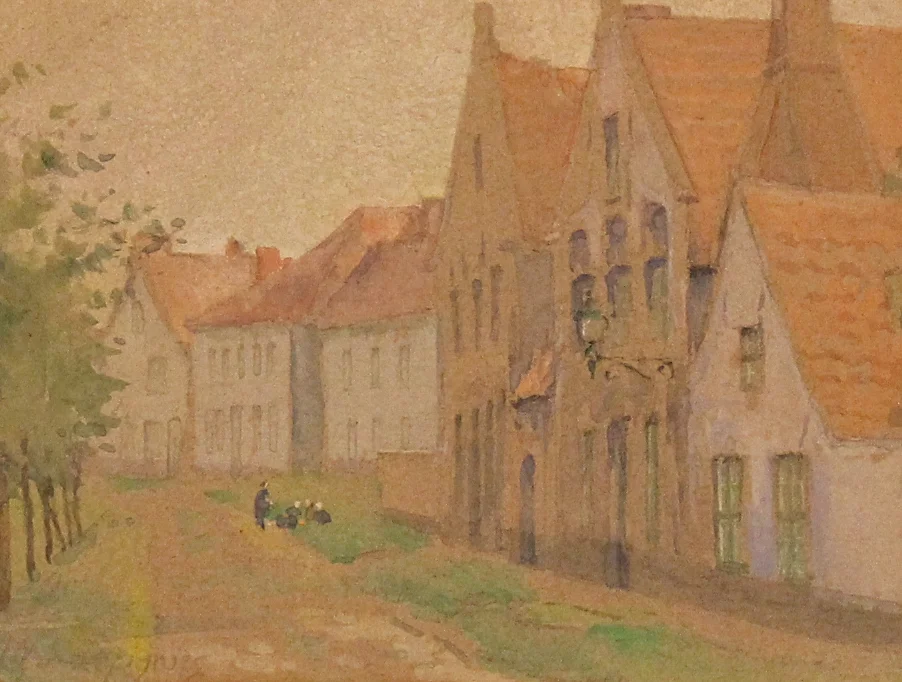Henri-Joseph Harpignies "Le pont" (c.1880)
Henri-Joseph Harpignies
(French, 1819-1916)
Henri-Joseph Harpignies was a French landscape painter of the Barbizon school. Born on June 28, 1819 at Valenciennes, he was determined to become an artist at a young age, despite his parents’ expectations that he would pursue a career in business. At age 27, Harpignies finally entered art school, studying under Achard’s Atelier in Paris. Through his studies he developed a distinct architectural style, which became a defining feature of his landscape paintings.
Harpignies traveled to Brussels in 1849, followed by a visit to Germany and then two years studying in Italy. Back in Paris, he followed the Barbizon school, befriending Camille Corot with whom he returned to Italy in 1860. Harpignies successfully exhibited his painting titled Lisière de bois sur les bords de l'Allier at the 1861 Paris Salon. After that, he exhibited annually at the Salon. Between 1864 and 1866, he frequently exhibited watercolors of Italian landscapes. He was admitted to the Société des Aquarellistes Français in 1881, and in 1886 he received his first honor for his artwork Le soir, dans la campagne de Rome. Harpignies was awarded the Legion of Honor several times, achieving Grand Officier status in 1911.
Beginning in 1885, Harpignies spent winters on the Cote d’Azur. By the turn of the century, his eyesight had begun to fail, sparking a distinct change in his style. He began focusing on shape and composition, rather than details. Harpignies died on August on 26, 1916 in Saint-Privé, France. His work can be found in the collections of the Musée d’Orsay in Paris, the National Gallery in London, and the Art Institute of Chicago.




